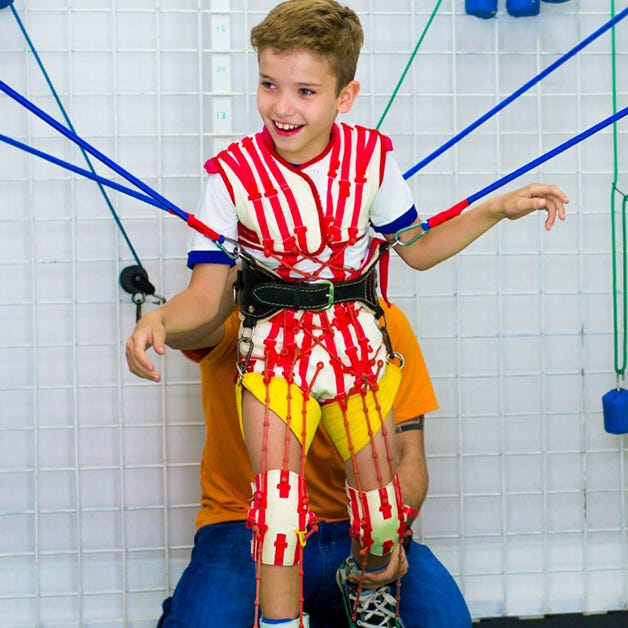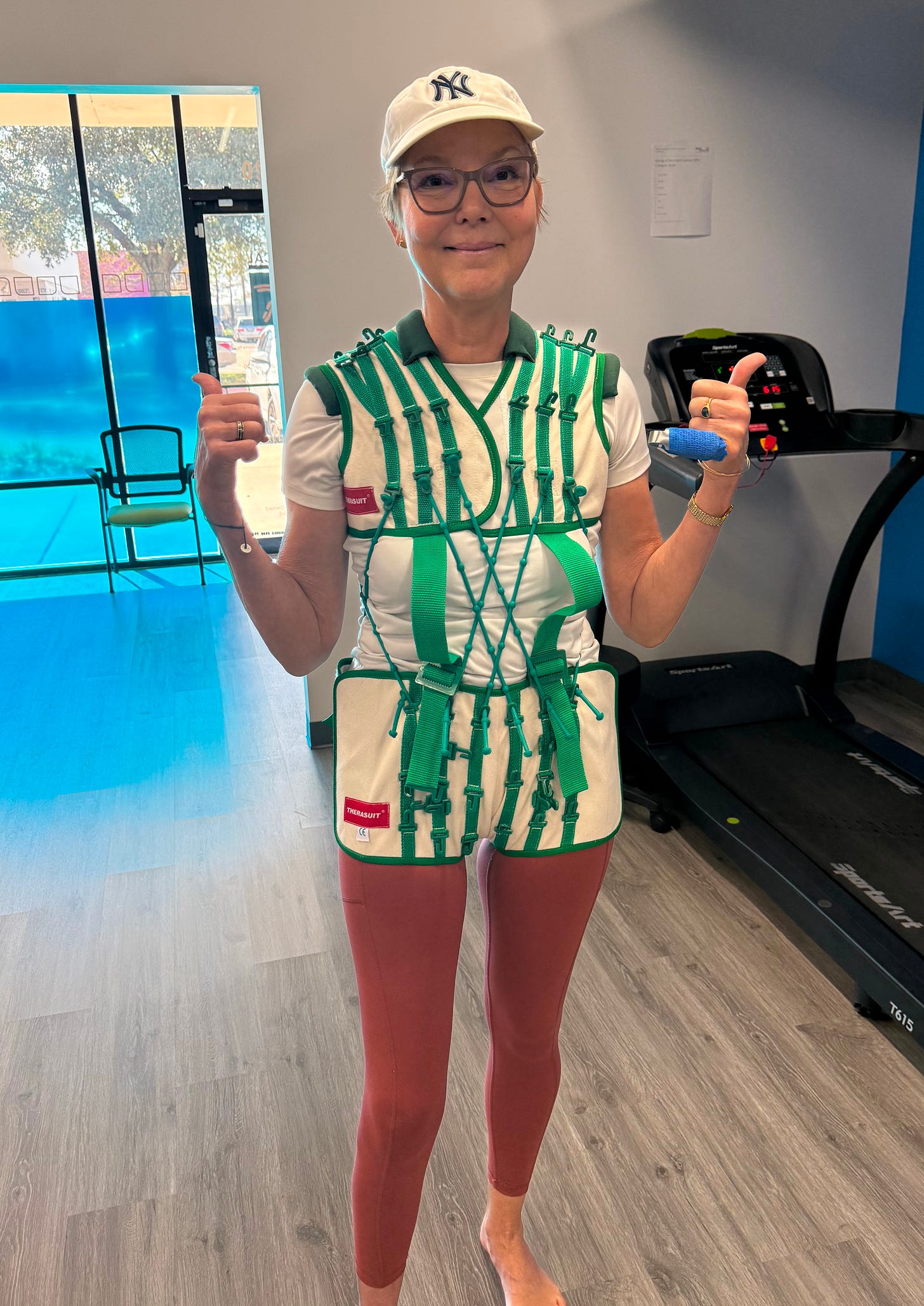Space Suits & Therapy Breakthroughs: How TheraSuit is Transforming Rehab
By Joseph Allen,PT,CertDN,CPT
The TheraSuit is a groundbreaking therapeutic tool designed to enhance rehabilitation for individuals with neurological and motor impairments. Originally developed in the late 1990s, the TheraSuit draws inspiration from space technology used by astronauts to counteract the effects of zero-gravity on muscle tone and strength. Its creators, Izabela and Richard Koscielny, envisioned a suit that could improve functional outcomes in individuals with conditions like cerebral palsy, traumatic brain injury, stroke, and other neurological disorders.
The Space Suit Connection
The idea for the TheraSuit emerged from observing how astronauts experience muscle atrophy and reduced bone density during extended stays in space. NASA developed countermeasures, including specialized suits and resistance training, to mitigate these effects and support musculoskeletal health. Inspired by this technology, the Koscielnys adapted the concept for terrestrial use, creating a suit that provides resistance and proprioceptive input to aid individuals with neuromuscular challenges. Interestingly, NASA continues to explore advancements in wearable technologies, including those inspired by the TheraSuit, for potential applications in space travel and rehabilitation on Earth.
What is the TheraSuit?
The TheraSuit is a soft, dynamic orthotic made up of a vest, shorts, knee pads, and shoe attachments, connected by elastic bands that mimic muscle function. These bands are customizable to provide varying levels of resistance and support, creating a tailored experience for each user. The primary goal of the suit is to re-establish proper movement patterns by aligning the body and providing external feedback. This enables patients to activate the correct muscle groups during therapy, promoting strength, coordination, and functional mobility.
Practical Applications in Pediatrics
The TheraSuit is widely recognized for its benefits in pediatric rehabilitation, particularly for children with cerebral palsy or developmental delays. Children often use the suit in conjunction with the Spider Cage, a specialized piece of equipment that allows dynamic movement while maintaining safety and support. Therapists incorporate activities such as:
Core stability exercises: Strengthening the trunk muscles to improve sitting and standing balance.
Gait training: Assisting children in learning to walk with proper alignment and reduced compensatory movements.
Upper limb exercises: Enhancing fine motor control for tasks like writing or self-care activities.
One of the most remarkable aspects of the TheraSuit is its ability to transform therapy into a playful and engaging experience. Activities are designed to feel like games, encouraging children to participate actively and stay motivated throughout the session.
Applications for Adults
While the TheraSuit is often associated with pediatric therapy, it also holds immense value for adults recovering from neurological injuries such as stroke or traumatic brain injury. For adults, the suit helps:
Rebuild muscle strength: By providing resistance that mimics natural movement patterns, it aids in regaining strength lost due to disuse or injury.
Improve balance and coordination: The proprioceptive feedback offered by the suit helps retrain the nervous system to maintain stability and control.
Restore functional independence: Activities like walking, climbing stairs, and reaching become more achievable with the targeted support of the TheraSuit.
Reimbursement Challenges and Solutions
Reimbursement for TheraSuit therapy in physical therapy clinics can be a complex process, as insurers may question its classification as a medically necessary intervention. For pediatric clients, therapists often address these challenges by emphasizing measurable functional outcomes such as improved gait, strength, and participation in daily activities. Documentation is crucial to justify the therapeutic benefits of the TheraSuit, focusing on how it meets specific goals in the patient’s plan of care.
For adult clients, similar challenges may arise. Therapists can counter this by demonstrating the suit's role in restoring independence, reducing fall risk, or improving quality of life post-injury. Proper use of coding, including CPT codes for therapeutic activities (97530) and neuromuscular reeducation (97112), paired with detailed notes on progress, can improve reimbursement success.
Therapists may also face issues with the cost of equipment and its maintenance. Clinics can mitigate these by investing in staff training to maximize the effectiveness of TheraSuit sessions and ensuring that therapy sessions align with insurance coverage criteria. Partnering with families to educate them about advocacy for coverage is another vital strategy.
The Future of the TheraSuit in Therapy
As therapists continue to explore innovative ways to improve outcomes, the TheraSuit remains a cornerstone of intensive therapy programs. Its adaptability makes it suitable for a wide range of conditions and ages, and ongoing research supports its effectiveness in enhancing functional gains. Whether used with children taking their first steps or adults striving to regain independence, the TheraSuit offers hope and tangible progress in rehabilitation.
NASA's ongoing interest in wearable technologies reinforces the potential of the TheraSuit and similar innovations to address both rehabilitation needs and challenges faced during space exploration. By bridging the gap between outer space and Earth, the TheraSuit exemplifies how cutting-edge technology can transform lives.
If you’re interested in learning more about how the TheraSuit could benefit you or a loved one, consult with a certified TheraSuit practitioner such as myself to explore tailored therapy options. Together, let’s unlock the potential for greater mobility, strength, and confidence with niche therapies!




